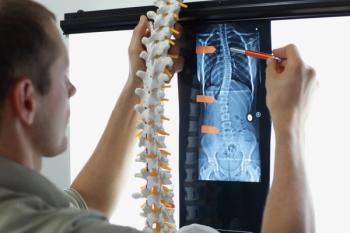
AI, malpractice and the future of physician liability
Sara Gerke, David A. Simon, J.D., LL.M., Ph.D., and Deepika Srivastava join the show to talk about malpractice and physician liability in cases involving artificial intelligence.
They explain how AI could redefine the standard of care, what happens when an algorithm contributes to patient harm, and practical steps physicians can take now to protect themselves — including
Check out our October cover story for a deeper look at how AI is reshaping medical malpractice: "
Don't miss our recent episodes on
Music Credits:
Groovy 90s Hip-Hop Acid Jazz by Musinova -
Relaxing Lounge by Classy Call me Man -
A Textbook Example by Skip Peck -
Editor's note: Episode timestamps and transcript produced using AI tools.
0:00 – Opening: The AI malpractice paradox
Why using too little or too much AI can both create legal risk.
0:13 – Episode setup
Austin introduces the guests and frames the core question: How does AI shift malpractice liability?
1:14 – AI and the standard of care
Gerke explains how jurors already view AI-guided decisions as potentially “reasonable.”
2:07 – Adoption drives legal expectations
Simon outlines how widespread use — not hype — determines when AI becomes mandatory practice.
4:03 – When AI harms a patient
Gerke on physician and hospital exposure today — and surgeons’ skepticism of manufacturer liability.
5:51 – Regulated devices enter the chat
Why manufacturers get pulled in when AI tools behave like medical devices.
6:04 – Device pathways and lawsuits
Simon details 510(k) vs. De Novo vs. PMA — and how each influences manufacturer accountability.
8:27 – Policy levers
How FDA and state decisions could shift responsibility upstream.
9:25 – Insurance reality check
Srivastava: Physicians still bear primary legal risk since they make the clinical call and sign the chart.
10:29 – Transition: From risk to action
Before pulling the plug on AI tools — what physicians should actually do.
10:43 – Practical protections
Srivastava’s immediate steps: informed consent, chart review, governance, and patient disclosure.
12:01 – Transparency as defense
How clear communication about AI use strengthens trust and reduces exposure.
13:20 – Training + governance gaps
Keeping workflows tight matters just as much as clinical judgment.
14:02 – Vetting tools and contracts
Simon: If AI claims accuracy, ask for validation — and liability protections.
15:30 – Labeling matters
Gerke calls for food-style transparency labels for AI devices.
16:27 – The “learned intermediary” burden
Even with better labels, liability flows back to the physician.
17:01 – P2 Management Minute
Quick interlude from Keith Reynolds.
17:54 – Rapid compliance playbook
Five habits that will hold up in court — whether you follow or override AI suggestions.
18:40 – Closing
Why AI is here to stay — and why documentation discipline must evolve with it.
19:10 – Outro
Credits, subscription reminder and link to October cover story.
Newsletter
Stay informed and empowered with Medical Economics enewsletter, delivering expert insights, financial strategies, practice management tips and technology trends — tailored for today’s physicians.














